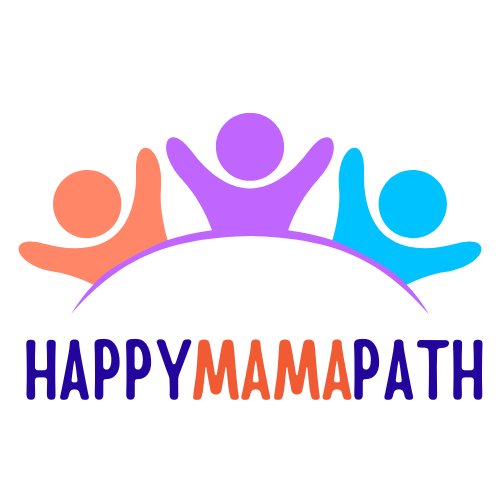In a world where textbooks are often outshined by smartphones, high school students are discovering that learning can be as engaging as scrolling through social media. Educational apps are transforming the way students tackle their studies, turning tedious homework into interactive adventures. With a tap and a swipe, they can unlock a treasure trove of knowledge right at their fingertips.
Table of Contents
ToggleOverview of Educational Apps for High School
Educational apps for high school cater to diverse learning needs. They empower students with resources that enhance skills across subjects such as math, science, and language arts. Many of these apps include interactive features like quizzes and games, fostering a more engaging study environment.
Accessing essential tools becomes seamless with educational apps. They provide instant feedback, allowing students to identify areas for improvement. Real-time progress tracking facilitates personalized learning pathways, meeting individual educational goals.
Several prominent educational apps serve the high school demographic. For example, Khan Academy offers free courses, videos, and exercises that cover a range of topics. Quizlet allows students to create custom flashcards, making studying more effective. Additionally, Duolingo supports language learning through gamified lessons.
Collaboration plays a vital role in educational app effectiveness. Tools like Google Classroom enable teachers to distribute assignments and connect with students easily. Such platforms enhance communication, ensuring students stay on track with their studies.
Using educational apps promotes self-directed learning among high school students. With the ability to explore subjects at their own pace, students cultivate a sense of autonomy. Supportive learning environments encourage exploration, fostering long-term retention of knowledge.
Research indicates that integrating educational apps into the curriculum can boost academic performance. Schools adopting technology report improved engagement and comprehension. Moreover, the flexibility of learning on mobile devices aligns with students’ lifestyles, making education more accessible.
Benefits of Using Educational Apps

Educational apps offer numerous advantages for high school students. They transform conventional learning, making it more interactive and enjoyable.
Enhanced Learning Experience
Interactive elements like quizzes and games enrich the educational journey. Engaging formats capture attention, helping students grasp complex concepts with ease. Real-time feedback allows for immediate corrections, facilitating deeper understanding. Visual aids and multimedia resources further enhance comprehension across subjects. Tailored content addresses diverse learning styles, ensuring every student finds a suitable approach. Enhanced retention rates also result from this dynamic learning environment, allowing them to apply knowledge effectively.
Flexibility and Accessibility
Students access learning materials anytime, anywhere, breaking geographical barriers. Mobile-friendly designs make it simple to study on the go. Increased convenience promotes self-directed learning, allowing students to focus on areas needing improvement. Those balancing extracurricular activities benefit from flexible study schedules. Instant updates keep users informed about new content and features, encouraging continued engagement. Educational apps accommodate various learning paces, making it straightforward for students to excel at their own speed.
Popular Educational Apps for High School
High school students benefit greatly from a variety of educational apps designed to enhance their learning experience. Below are key categories of these apps.
Subject-Specific Apps
Subject-specific apps cater to the unique needs of high school students. For math, apps like Photomath offer step-by-step solutions to problems. Science enthusiasts find apps such as Labster, which simulate laboratory experiments, facilitated learning. Language arts students can enhance their skills with apps like Grammarly, which provides real-time writing feedback. Other subjects, including history and social studies, have dedicated resources like Kahoot for interactive quizzes. These tailored tools help students master subject matter while making study sessions engaging.
General Learning Tools
General learning tools offer broad applications across disciplines, supporting various educational needs. Google Classroom streamlines assignment management and communication between teachers and students. Additionally, platforms like Quizlet enhance study habits with flashcards and practice tests. Evernote serves as a versatile organization tool where students can compile notes and resources. Notion allows students to create personalized study planners. These apps promote efficient studying and organization, crucial for successful high school education.
Factors to Consider When Choosing Apps
Choosing the right educational app is crucial for high school students. Several important factors can influence effectiveness and overall learning experience.
User Reviews and Ratings
User reviews and ratings provide valuable insights into an app’s performance. High ratings typically indicate a positive user experience. They reflect satisfaction and suggest that an app meets educational needs effectively. Checking multiple platforms helps identify consistent feedback. Reading comments from other students can clarify what features are most beneficial. Look for apps with high engagement levels, as this often correlates with better learning outcomes. Balancing academic goals with user feedback enables better decisions when selecting educational apps.
Compatibility with Curriculum
Compatibility with the curriculum plays a significant role in app selection. Apps that align with state or district requirements facilitate enhanced learning experiences. High school students benefit from using tools that reinforce classroom content. Ensuring coverage of subjects helps maintain focus on important material. Researching apps designed specifically for high school curricula aids in identifying those that support coursework effectively. Choosing applications that seamlessly integrate with teaching methods promotes better understanding and retention. This approach maximizes educational impact and aligns technology with academic objectives.
Educational apps have transformed the high school learning landscape. They offer students a dynamic and interactive way to engage with their studies. By providing instant feedback and personalized learning pathways, these tools cater to diverse learning styles and needs.
With a plethora of options available, students can choose apps that align with their academic goals and subjects. The integration of technology not only enhances comprehension but also fosters a sense of autonomy in learning. As educational apps continue to evolve, they’re set to play an even more significant role in shaping the future of education. Adopting these tools can lead to improved academic performance and a more enjoyable learning experience for high school students.



